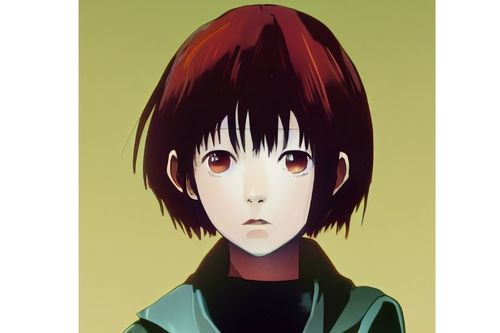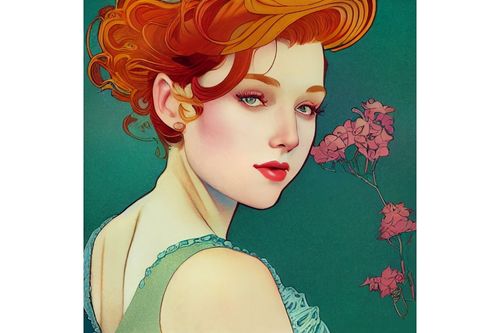Table of Contents
Comic art involves creating stylized or simplified drawings to tell a story, make a point, or elicit laughter. One example of this art is the editorial or humor cartoon, commonly found on the op-ed pages of newspapers or in magazines like the New Yorker. Another well-known format is the comic book or graphic novel, which tells dramatic or bizarre stories through a succession of several pictures. This field requires good drawing skills and the ability to make drawings emotive and interesting.
Technically, a comic expresses text through pictures on strips or frames. Texts of varying lengths can appear in some or all of the strips. This simple definition demonstrates the versatility of this style—our imaginative applications of cartoons, pictures, text, and other elements reveal that the possibilities are almost endless.
What is comic art?

ChatGPT
Sequential art, commonly known as comic art, presents stories in a sequence, similar to film. This art form is ancient, appearing in cave paintings, Egyptian hieroglyphics, and Ancient Greek pottery. Traditionally, comic books were regarded as children’s literature until recent times.
What are the comic art formats?
A comic does not follow a standard format. There are three popular formats for such art-
Silent comic strip
Artists create these comic strips using only visuals, telling stories through graphic elements without the use of words.
Comic strip or book
Artists utilize images and words to make these. In the most traditional format, four independent images or strips depict characters interacting in dialogue, or text explains the portrayed scene.
The graphic novel
It is the most extensive comic format. You can use it to create much broader comic book stories. Strips come in various sizes, and the narration is more rapid.
The structure of a graphic novel is similar to a movie script.
Comic art styles

There are many styles. Each comic artist uses their own style to tell a story. Here are some basic comic art styles which define comic art as we know it.
Traditional comic strip
There is a large diversity of works within each sub-genre of art style. Sunday newspapers have included everything from Family Circus to Garfield. However, they transform into examples of brief art formats which do not need three-dimensionality or too much attention to detail. Most of those in this category use the Platinum Age of comics as an influence, which began in the late 1800s with the first serialized collection of comic strips.
Superhero golden age
These images come to mind when we think of old comics. This style produced the first renderings of Superman, Wonder Woman, and other DC and Marvel heroes. It was immensely popular from the 1930s until the 1950s, when comic books began mass manufacturing.
The silver age
The Silver Age saw the emergence of a more complicated drawing style that made greater use of three-dimensionality, detail, and shadows. Most notably, it is heavily affected by the new age of art, which arose in the 1960s with counter-cultural movements.
The bronze age
With an already established audience and aesthetic exploration, the bronze phase of comic book art grew increasingly focused on relatively realistic storytelling, addressing real-world issues at the time. The painting style grew less weird and more photorealistic, giving the character more human features both aesthetically and through text, resulting in a more cinematic sense.
Dark age
In the 1980s, there was a significant shift in our understanding of comics, both narratively and visually. The Dark Age is named so because of its emphasis on darker colors, night settings, antagonists, and more ‘dark’ themes.
Key elements of comic art
In addition to the strips, pictures, and words, all comics as a genre have some qualities that the author or comic book artist must consider-
The plane
The character’s or setting’s profile.
The angle
Where is the ‘camera,’ i.e., what are we displaying, what can be seen?
The portrayal of a moment or the passage of time
These elements provide information about the time of day, date, and season in which the incidents from the story occur.
Movement representation
Methods of expressing the dynamics of bodies or objects
Speech bubbles
These show what the characters are saying or thinking.
Onomatopoeia
The linguistic portrayal of sound or noise.
Symbols
Artists use symbols to express emotions or actions. For example, a lightbulb can represent an idea, or a ‘zzz’ can represent the sleeping process.
Key takeaways
- Creating stylized or simplified drawings for storytelling, making a point, or telling a joke is known as comic art. The editorial or humor comics strip can be found on the Op-Ed pages of newspapers or in magazines such as the New Yorker.
- Many comic art styles exist in the comic world. Each comic artist uses their style to tell a story. Some basic comic art styles, such as the traditional, golden, bronze, and silver age, define comic art as we know it.
- Comic art is drawn based on some key elements. The Plane, angle, the portrayal of a moment, and speech bubbles can be found in almost all comic books.
Did you find this blog informative? If so, please share your thoughts in the comments section below. Click here to contact us for more information on comic art. We would be happy to assist you with your queries.
Liked this blog? Read next: Everything you need to know about Rome University of Fine Arts
FAQs
Q1. How long does it take to learn comic art?
Ans- you can attain a respectable comic drawing level in one to two years, but a proficient level will take considerably longer. It would take four to six years of regular research and drawing practice for someone to draw comics very effectively.
Q2. Who invented comic art?
Ans- Rodolphe Töpffer (1799-1846), a Swiss schoolmaster, is often credited with inventing the comic strip, releasing seven of what we now call comic books or, more recently, graphic novels.
Q3. Are comic books low art?
Ans- Historically, academic institutions saw comic books as inferior art and disregarded them. However, this pattern has shifted in recent decades, and many consider comic books a significant art form.







